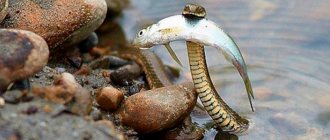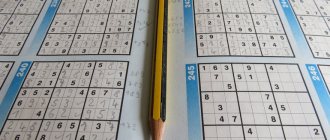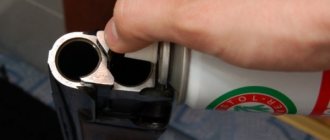The Vietnam War took place between 1964 and 1975. Various countries participated in it, namely the USA, Vietnam, USSR, South Korea, New Zealand, Australia, Thailand, Philippines, Taiwan, China and North Korea. This was another round of development of the Cold War between the superpowers. The essence of the war was to obtain all of Vietnam as a satellite. The southern part of the country supported the American government, while the north sided with the Soviet Union. Thus, the war, which claimed many lives, had one goal: control of the country and the possibility of placing military bases on it to control the entire Asia-Pacific region.
New dangers for American soldiers
The US Army was ill-prepared for a ground war, as it had no previous experience in jungle operations. Their shape in the first years of the conflict was the same as always, so they stood out well in the foliage. At the same time, the Vietnamese had a camouflage uniform, and it was difficult to notice them in the thick grass.
US military uniform of that time
As for armored vehicles, they also could not move through the jungle, so the Americans could only count on their own manpower and air support. Their aircraft immediately took a leading position in the war, but this situation was changed when the USSR entered the Vietnam conflict on the side of North Vietnam.
But not into direct confrontation, but began to supply the necessary equipment. The Soviet aircraft turned out to be more technologically advanced, and the experience of the pilots acquired during the Second World War made it possible to shoot down American aircraft with minimal losses. However, NATO forces had complete superiority at sea, which made it possible to shell coastal areas from ships.
It is worth noting that the NATO army quickly realized its mistakes at the beginning of the conflict and made adjustments to its uniform and improved its equipment. This made it possible to use it in jungle conditions.
Tunnels and traps of Vietnamese guerrillas
Cu Chi is a rural area about 70 kilometers northwest of Saigon that has become a thorn in the side of first the French and then the Americans.
The same case when “the earth burned under the boots of the invaders.” It was never possible to defeat the local partisans, even though an entire American division (25th Infantry) and a large part of the 18th Division of the South Vietnamese Army were stationed close to their base. The fact is that the partisans dug a whole network of multi-level tunnels with a total length of over 200 kilometers, with many camouflaged exits to the surface, rifle cells, bunkers, underground workshops, warehouses and barracks, densely covered with mines and traps on top. They are quite simple to describe: these are underground fortifications that are perfectly camouflaged in the local tropical forest. The main purpose of their creation was to deliver unexpected blows to the enemy during the years of American aggression. The tunnel system itself was thought out in the most careful way, thereby making it possible to destroy the American enemy almost everywhere. An intricate zigzag network of underground passages radiates away from the main tunnel with many branches, some of them are independent shelters, and some end unexpectedly due to the geographical features of the area.
The cunning Vietnamese, in order to save time and effort, did not dig the tunnels very deeply, but the calculations were so accurate that if tanks and heavy armored personnel carriers passed over them, or were hit by artillery shells and bomb attacks, the recesses did not collapse and continued to faithfully serve their creators.
To this day, multi-level underground rooms, equipped with secret hatches covering the passages between floors, have been preserved in their original form. In some places in the tunnel system, special types of plugs are installed, designed to block the enemy's path or stop the penetration of poisonous gases. Throughout the dungeons there are cleverly hidden ventilation hatches that open to the surface in a variety of unnoticeable openings. Plus, some passages at that time could perfectly serve as fortified shooting points, which, naturally, was always a big surprise for the enemy.
And even this was not enough for the Vietnamese. The tunnels and approaches to them were equipped with a large number of ingenious death traps and masterfully camouflaged “wolf” pits. For greater security, anti-personnel and anti-tank mines were installed at the entrances and exits, which have now, of course, been destroyed.
Often, during wartime, entire villages lived in the tunnels, and this allowed the Vietnamese to save many lives. There were weapons and food warehouses, smokeless kitchens, hospitals for the wounded, as well as living quarters, camp headquarters, shelters for women, the elderly and children. It’s not like a village, a whole city underground! Even during hostilities, the Vietnamese did not forget about culture and education: school classes were set up in large underground rooms, and films and theatrical performances were also shown there. But, for all that, this entire underground world was carefully hidden and disguised
Since numerous shelling and bombing did not bring the desired result, the Americans eventually had to go underground themselves. The Tunnel rats, “tunnel rats,” recruited short, thin, desperate guys, ready with one pistol to climb into the unknown, in which they were awaited by cramped conditions that did not allow them to breathe, darkness, mines, traps, poisonous snakes, scorpions and, after all this, if you're lucky - evil partisans. A three-level system of tunnels, secretly carved out of the hard clay soil with primitive tools by numerous groups of three or four people. One digs, one drags the earth out of the tunnel to a vertical shaft, one lifts it up, and another drags it somewhere and hides it under leaves or throws it into the river.
When the team makes its way to the neighboring one, a thick pipe made of a hollow bamboo trunk is inserted into the vertical shaft for ventilation, the shaft is filled up, and the bamboo on top is disguised as a termite mound, stump, or something else.
Only a Vietnamese could squeeze through such a gap.
The Americans used dogs to search for entrances to tunnels and ventilation shafts. Then they began to hide captured uniforms there, usually M65 jackets, which the Americans often abandoned when providing first aid and evacuating the wounded. The dogs smelled a familiar smell, mistook it for their own and ran past.
If they did find the entrance, they tried to fill it with water or fire tear gas into it. But a multi-level system of locks and water castles protected the tunnels quite reliably: only a small segment was lost, the partisans simply brought down its walls on both sides and forgot about its existence, eventually digging out a workaround.
Like many other things, metal was in terrible short supply, so the partisans collected numerous unexploded bombs and shells (and an absolutely incredible amount of them were dumped on a tiny patch; the jungle was simply demolished by carpet bombing from B-52s, turning the area into a lunar landscape), sawed , explosives were used to make homemade mines...
...and the metal was forged into spikes and spears for traps in the jungle.
In addition to the workshops, there was a dining room, a kitchen (with a specially constructed external smokeless hearth that did not give away the place of cooking with a column of smoke), a uniform sewing shop….
Let's look at the traps used by Vietnamese guerrillas during the war and how they ruined the lives of the occupiers.
Vietnamese traps, being very insidious and effective products, at one time spoiled a lot of blood for Americans. Perhaps it will be useful to you too.
The jungle in Cu Chi was fraught with many unpleasant surprises, from the already mentioned mines, which even blew up tanks like this M41, to the famous movie homemade traps, some of which can be seen up close.
"Tiger Trap" Ji Ai walks along calmly, suddenly the ground under his feet opens up and he falls to the bottom of a hole studded with stakes. If he is unlucky and does not die immediately, but screams in pain, his comrades will gather nearby, trying to pull the unfortunate man out. Need I say that around the trap in several places there are exits from the tunnels to the surface, to camouflaged sniper positions?
Or more humane traps, “Vietnamese souvenirs”. This is a pretty high-tech trap. There are pins at the bottom; in addition, ropes connected to nails are stretched under the round platform. When a soldier steps on an inconspicuous hole, covered on top with a piece of paper with leaves...
The leg falls through and the first thing he does is pierce the leg with pins at the bottom, at the same time the ropes are stretched and pull nails out of the holes, which pierce the leg from the sides, while fixing it and making it impossible to pull it out.
As a rule, the soldier did not die, but as a result he lost his leg, and then received pins removed from his leg in a Saigon hospital as a souvenir. Hence the name.
As you probably already noticed, special attention was paid not only to the task of piercing the adversary, but also to pin him in place and not let him get off the hook. This “basket” was placed in flooded rice fields or near river banks, hidden under water. A paratrooper jumps out of a helicopter or boat, OPA! - we've arrived...
However, it happened that the task was not to injure, but to kill. Then they put on grinds like this, in which G.I. quickly stuffed himself under his own weight. Once…
Or two...
For those who liked to enter the house without knocking, simply by knocking down the door with a valiant blow, such a device was hung above it. The slow one went straight to the other world, the quick one managed to put a machine gun forward - for such, the lower half of the trap was suspended on a separate loop and made a sofa out of his eggs.
Clamshell trap. The simplest and most common trap. They say that at one time it was mass-produced by Vietnamese schoolchildren during labor lessons. The principle is simple. Placed in a small hole and covered with leaves. When the enemy steps on it, under the weight of the foot, the boards are dented and the nails, previously smeared with manure, are pierced into the foot. Blood poisoning is guaranteed.
Board with spades. It is made on the principle of a rake, at the end of which there is a board with nails. When the enemy steps on the “pedal”, the board joyfully jumps up and hits the soldier in the chest, either in the face, or in the neck, or wherever it hits.
Sliding trap. It consists of two wooden boards moving along guides and studded with pins. The boards are moved apart, a support is placed between them, and they are wrapped with an elastic rubber band (or Pilates tape). When the support holding the slats moves, the latter, under the action of the cord, slide along the guides towards each other. But they are not destined to meet, because someone’s soft body is already between them.
A welcoming trap. Making such a trap is not difficult, and it will delight you for a long time. You and your guests. You will need: two bamboo stalks, steel rods and wire. We connect the bamboo into the letter “T” and drive the rods into the headboard. We hang the finished trap above the door, connect it with a wire and invite a neighbor to come over, for example, to watch football. When a neighbor inadvertently crosses the wire, the trap flies whistling towards the guest.
crossbow
Log with spikes
Stretch trap - “Bamboo whip”
And much more…
Then the Americans paid dearly for their invasion.
But since then there have been quite a few aggressions by the United States against other countries. It seems that they have drawn conclusions, but they are unlikely to come to the brave Vietnamese.
USA: irretrievable losses - 58 thousand (combat losses - 47 thousand, non-combat losses - 11 thousand; of the total as of 2008, more than 1,700 people are considered missing); wounded - 303 thousand (hospitalized - 153 thousand, lightly injured - 150 thousand)
The number of veterans who committed suicide after the war is often estimated at 100-150 thousand people (that is, more than died in the war).
South Vietnam: data varies; military casualties - approximately 250 thousand dead and 1 million wounded; civilian casualties are unknown.
(based on materials from Goldem)
Traps for American soldiers
Vietnamese soldiers turned out to be original in creating traps. This was the only effective way to fight, since the weapons in Vietnam in the initial stages of the conflict were significantly inferior in quality to US weapons. A wide variety of methods were used to combat the occupiers, the following were used:
- Improvised explosive devices;
- Punja's trap is regular and rotating;
- Bamboo Trap;
- Whip Trap;
- Bucket trap;
- Trap with closing sides;
- Trap cartridge;
- Cube-shaped spike traps;
- Standard stretch marks;
- Poisonous snakes;
- Mining;
- Exploding flags;
- Self-firing guns protecting the graves of ancestors.
These are the main Vietnamese traps that became a real nightmare for the American army and its allies. No modern weapons could cope with them, so NATO forces lost soldiers every day without a fight. You can read books about the Vietnam War to learn more about the pitfalls of the guerrillas.
Poisonous "gifts"
In Vietnam, the liberation army often used traps, the main element of which were poisonous snakes. Usually they used bamboo keffiyeh. It is also called the “three-step snake” because its venom acts instantly. This is a small snake that was hung by its tail at face level. When it bites, the body's blood clotting process is disrupted and red blood cells are destroyed.
This poisonous snake was widely used by the Vietnamese in traps
The Vietnamese liberation army soldiers hid such snakes wherever possible: in bags, boxes, tunnels, in empty bamboo stalks. They were also planted on the trails where American troops were supposed to pass.
Minefields
Soviet-made anti-personnel mines were used to mine the villages that had to be abandoned. In addition to villages, large fields were mined where the enemy should or could have been located. Absolutely everything in the villages was mined: weapons, windows, doors, objects that could be of interest to the invaders, and so on.
During war, the symbolic meaning is to remove the enemy flag from the flagpole. But often NATO soldiers blew themselves up. Considering that the fighting was fierce, the first desire after the victory was to remove the flag, which was flying in a prominent place. But when someone started to pull the rope, he pulled the pin out of the grenade and exploded. When his colleagues saw this, they ran up to the exploded soldier. At this moment, a more powerful explosion was heard, which significantly increased the losses of NATO forces.
Protection of graves
Often in Vietnam, traps were set on graves, as the occupiers did not hesitate to avenge their fellow dead. Often a gun was placed in the grave. This trap could have taken one life. They also used a “torpedo”. There were many different types, for example, they installed a shotgun in a coffin. It fired when the lid was opened. Another type of such trap resembled an anti-tank mine in its principle of operation.
Cube with spikes
Such traps were often set during the Vietnam War. It was a small metal cube with spikes. He did not kill, but could neutralize an enemy soldier for a long time. Thus, the leg of the enemy soldier was damaged, and he became helpless. Moreover, two other soldiers were neutralized and were forced to carry the wounded man and his weapon.
Cube with spikes. Trap in Vietnam
About Punja's trap
They were often installed during the Vietnam War near American bases, disguised as a thin layer of grass or soil. In this state it was extremely difficult to detect. It was clearly designed for a human leg and looks like a cube with spikes, but unlike it, the edges were lubricated with various wastes. In this case, the victim not only dropped out of the battle for a while, he received blood poisoning.
Punja's Trap
It is worth noting that such traps had different sizes. Thus, during the Vietnam War, three-meter overturning cubes were used. Once inside, a person died from sharp thorns. Then the cube turned 180 degrees and waited for a new victim. In such cases, Vietnamese partisans could obtain captured weapons for further use against US soldiers.
About the Bamboo trap
This was a great way to get rid of the looters. This trap was installed at the entrance to an abandoned house. When the enemy entered, a stick with spikes was pointed at him. In most cases, such a blow was fatal. The main blow fell on the head or stomach to crush the skull or rip open the insides. The same devices were sometimes used on small jungle paths.
About the whip trap
It also served as a kind of weapon to fight the Americans.
Outwardly, it was a tripwire, but it did not use explosives. So, a bamboo trunk with long stakes was bent and connected to a guy wire. If someone touched the tripwire, they received a powerful blow to the area from the knees to the stomach. Such weapons were rarely lethal, but they reduced the enemy's combat effectiveness and negatively affected the morale of the enemy army.
Bamboo Trap
Bucket trap nightmare
It is somewhat similar to Punji, but it used fish hooks set at an angle. The bucket itself was buried and camouflaged. If an enemy soldier fell into such a trap, he could not get out of it on his own. They had to dig out the bucket and take the victim to the medical unit. If someone tried to get out on their own, the hooks dug into the leg more strongly.
Despite the fact that it is not a lethal weapon, with its help the number of enemy combat-ready soldiers decreased daily. To make it, you needed any bucket and several fishhooks. Simplicity and low cost made it possible to use such a device especially often.
Trap with closing sides
To make it, two boards were fastened with elastic rubber and stretched. Bamboo was inserted between them. Such a structure was installed in a pre-dug hole, at the bottom of which stakes or poisonous snakes could be located. When someone stepped on the bamboo sticks, they fell out and the victim found himself pinned at stomach level.
Snake board
As stated earlier, snakes were often used as lethal weapons during the Vietnam War. The snake board was installed in small reservoirs at the ford site. When someone stepped on a special plate, the other end of the board hit the unfortunate person. Often a poisonous snake was tied to the end by the tail, which, when hungry, bit the first person it met. Thus, one trap could destroy several enemy fighters at once.
"Cartridge"
This is a homemade pressure-action weapon from the Vietnam War, located in a special bamboo container. A variety of cartridges were used here. They dug into the ground, and when they stepped on the plate, they would be shot in the leg or groin. In this case, the wound was not fatal, but required serious treatment.
Trap "Cartridge"
"A pineapple"
A very popular type of trap in Vietnam. It consisted of a grenade or various high-explosive shells disguised as a pineapple. They were hung from a tree or bush. Detonation occurred when the branch was touched. Such a weapon could destroy several people at once. At the same time, it is easy to install and practically safe.
Vietnamese traps for Americans
The article is written based on the books by Alan Lloyd Peter »Back. Part 1: Across the Fence" and "Back. Part 2: Into the Jungle."
During the Vietnam War (1964-1973), Americans faced one unexpected and very unpleasant surprise - a large number of Vietnamese traps. Due to the natural features of the area - dense jungle, many rivers and swamps, as well as an underdeveloped road network, the Americans could not fully use vehicles, and were forced to rely on helicopters in huge numbers to move troops. In the Vietnamese jungle itself, in the depths of the territory, American troops, having no other option, were forced to move and fight on foot. And this is in conditions of average summer temperatures of more than 30 degrees and one hundred percent humidity. It is also worth remembering what the rainy season is in Vietnam - when tropical rains fall almost continuously for several months, flooding vast areas with water. The main character of the film “Forrest Gump” talks about the rains in Vietnam: “One day it started to rain and did not stop for four months. During this time we learned about all types of rain: direct rain, slanting rain, horizontal rain, and even rain that comes from bottom to top.”
American Marines in murky Vietnamese waters
In the wilds of the Vietnamese jungle
Vietnamese swamp. Batangan. 1965
South Vietnamese Army soldiers on the march
A Piasecki H-21 Shawnee helicopter transports reinforcements and picks up the wounded. Vietnam. The beginning of the war. 1965
An aerial cavalcade of Bell UH-1 "Huey". 1968
A column of the 25th Division on an M113 armored personnel carrier (APC) is moving along the “federal” road Tau Ninh-Dau Tieng. 1968
It was no better in the mountains of Vietnam. Shau District
In such specific conditions, when even a few dirt roads turn into an impassable mess, and the use of aviation is problematic, the technical superiority of the American army is to a certain extent leveled out and Vietnamese traps become very effective and deadly. Here are some of them.
The famous Punji trap was installed in large numbers on forest paths, near American bases, and being camouflaged under a thin layer of grass, leaves, soil or water, it was difficult to detect. The size of the trap was calculated exactly to fit the foot in the boot. The stakes were always smeared with feces, carrion and other bad substances. Getting your foot into such a trap, having your sole pierced by stakes and being wounded almost certainly caused blood poisoning. They often had a more complex design.
Broken shoe
Bamboo trap - installed in the doors of rural houses. As soon as the door was opened, a small log with sharp stakes flew out of the opening. Often traps were set in such a way that the blow would fall on the head - if triggered successfully, this would lead to severe injuries, often fatal.
Sometimes such traps, but in the form of a large log with stakes and a trigger mechanism using a tripwire, were installed on paths in the jungle.
In dense thickets, the log was replaced with a spherical structure. It should be noted that the Vietnamese often made stakes not from metal, but from bamboo - a very hard material from which knives are made in Southeast Asia.
Whip Trap - often set along jungle trails. To do this, a bamboo trunk with long stakes at the ends was bent and connected to a guy wire through a block. As soon as you touched a wire or fishing line (the Vietnamese often used it), the released bamboo trunk with stakes hit with all its might the area from the knees to the stomach of the person who touched it. Naturally, all traps were carefully camouflaged.
Big Punji is a larger version of Punji. This trap inflicted much more serious injuries - here the leg was pierced up to the thigh, including the groin area, often with irreversible injuries in the area of the “main male organ”. The stakes were also smeared with something nasty.
One of the scariest big Punjis is the one with the rotating lid. The lid was attached to a bamboo trunk and rotated freely, always returning to a strictly horizontal position. The lid was covered with grass and leaves on both sides. Having stepped on the platform lid, the victim fell into a deep hole (3 meters or more) with stakes, the lid was rotated 180 degrees and the trap was again ready for the next victim.
Bucket Trap (bucket trap) - a bucket with stakes, and often with large fishing hooks, dug into the ground, camouflaged. The whole horror of this trap was that the stakes were firmly attached to the bucket at an angle downwards, and if you fell into such a trap, it was impossible to pull out your leg - when you tried to pull it out of the bucket, the stakes only dug deeper into your leg. Therefore, it was necessary to dig out a bucket, and the unfortunate man, along with the bucket on his leg, was evacuated using MEDEVAC to the hospital.
Side Closing Trap - two boards with stakes were held together with elastic rubber, stretched, and thin bamboo sticks were inserted between them. As soon as you fell into such a trap, breaking the sticks, the doors slammed shut just at the level of the victim’s stomach. Additional stakes may also have been dug into the bottom of the pit.
Spike Board Trap - These traps were usually installed in shallow ponds, swamps, puddles, etc. As soon as you stepped on the pressure plate, the other end of the board with stakes would forcefully hit upward and towards the person who stepped on it. A successful hit often resulted in death. An example of such a trap being triggered from the film “Southern Hospitality”.
The Vietnamese have launched mass production of traps
Press-action cartridge trap in a bamboo container. Various cartridges could be used, including hunting cartridges with shot or buckshot.
Although all these traps look impressive, of course, the damage they cause cannot be compared with mines and tripwire grenades. By constantly mining the territory and setting up tripwires, the Vietnamese managed to turn the presence of the American military on foreign soil into a real hell.
"Pineapple" - grenades, high-explosive shells and other ammunition suspended from tree branches. To trigger it, you had to touch the branches. One of the most common traps during the Vietnam War.
Stretching - installed on the ground or close to it. The situation was aggravated by the fact that in the forest floor of the jungle, in the twilight, it is very difficult to notice the trap, and even more so in forty-degree heat and one hundred percent humidity, which clearly do not contribute to concentration. The photo from Vietnam shows a well-installed tripwire with a Chinese hand grenade in the grass. Even with camera flash it is very difficult to notice.
Very often the Vietnamese installed tripwires underwater. It was almost impossible to detect them in muddy water.
Often, a vessel made of thick bamboo filled with a mixture of ammonia nitrate and diesel fuel was installed under a grenade or other ammunition. This technique greatly increased the damaging effect of a grenade explosion. So, on December 6, 1968, in the Ho Chi Minh Trail area, one such tripwire led to the death of 5 Marines and injuries of varying degrees of severity to another 12 from the group. The tripwire was the most common trap during the Vietnam War.
Naturally, as in any other big war, the Vietnamese massively used mines of various types - ordinary push-action, jumping, tripwire, directional, which were often set to non-removable, landmines along the roads to blow up vehicles and armored vehicles, as well as ambushes and sabotage behind enemy lines.
Good shot. An explosion of ammunition at a Marine base as a result of sabotage. Vietnam. March 18, 1968
To prevent their own people from falling into traps, the Vietnamese developed an entire signaling system of sticks, leaves and broken branches arranged in a certain way. An experienced person could use these marks to determine not only that a trap was installed nearby, but also the type of trap.
Trap signs
It is worth noting that the North Vietnamese showed amazing resilience, determination and fearlessness in this war. They skillfully used their modest resources, as well as the natural and climatic conditions of their homeland, inflicting the maximum possible damage on the enemy.
In the Vietnam War, the American army lost almost 60 thousand killed. Vietnam. September 16, 1966
This is not to say that the Americans did not struggle with this. The traps and signaling system were carefully and constantly studied. Regular training was conducted with personnel, and pocket instructions on traps and their disarming were issued. Miners began to be placed at the head of the groups.
Miners at the head of the patrol. Vietnam. April 1972
Disarming a trap
Rewards were paid to local residents for reports of found traps.
USMC announcement of reward for reporting decoys
However, the American military still continued to fall into traps and be blown up throughout the war.
Other ways to fight occupiers
The partisans tried to avoid direct confrontation with the American army, since they had no chance of victory. However, they effectively fought not only with infantry, but also with enemy equipment. Anti-tank mines were used against heavy equipment. According to statistics, it was in connection with collisions with mines that the Americans lost more tanks than in direct collisions with the enemy.
Vietnamese partisans used the features of the landscape to fight enemy equipment. They created many different special traps, thanks to which a tank or combat vehicle failed and could no longer be useful in battle. Enemy aircraft were destroyed with the help of anti-aircraft guns. They camouflaged themselves in the jungle foliage. In addition to airplanes, in Vietnam these weapons were used to combat helicopters. However, the advantage ended after the first turn. The anti-aircraft gunners then became an open target.
Vietnamese anti-aircraft gunners
There were also guerrilla saboteurs who carried out acts of sabotage against American aircraft, their weapons, and so on.
They damaged electronics, planted mines on runways and destroyed fuel depots. The main weapon against US aircraft was Soviet aircraft. Air battles took place exclusively between pilots of these two countries. After the Soviet Union entered the war, US air superiority became a big question mark. However, the USSR used only airplanes, helicopters were not used. The Vietnam War was one of the most terrible for Americans. It was a real test for their equipment and soldiers, who were not used to fighting without full support from artillery and aviation. The losses of such a modern army were simply enormous. During the war, it turned out that the weapons of the two superpowers were approximately equivalent in quality, but the cost of this test turned out to be quite high.
It is worth noting that only Vietnam became such a nightmare for Americans. In other armed conflicts where armies participated or weapons of the USSR and the USA were used, standard methods of combat were used. Thus, losses were much lower and it was possible to rely on strategic and tactical planning of operations. If you found this article useful, please share the link to it on social networks. This will help the development of the site. Vote in the poll below and rate the material! Please leave corrections and additions to the article in the comments.
Vietnamese military traps that no one should fall into
The commander-in-chief of the American forces, William Westmoreland, was accustomed to fighting according to the rules of past wars: strength against strength. For the Vietnam War (1965-1973), he even developed a grandiose “Seek and Destroy” scenario. The only problem is that the Vietnamese didn’t want to fight like a general.
Subscribe and read Express Newspaper in:
Vietnamese tactics
Tropical lush vegetation gave the rebels shelter, rice plantations provided food, an extensive network of canals and rivers saved them from thirst, and the high population density and spirit of the local residents made it possible to make up for human losses and receive operational information about the location, number and equipment of the enemy. The actions of the Vietnamese partisans did not stop day or night, and this exhausted the American soldiers not only physically, but also psychologically. After all, you constantly had to be in tension, without rest, without a sense of security, and often without sleep, food and drinkable water.
The rebels' tactics were to destroy or incapacitate small combat units: platoons and subunits, individual soldiers. The Viet Cong used any means at hand to create sophisticated traps. Metal was in short supply, so unexploded shells from carpet bombings, metal Coca-Cola cans, and even captured weapons were used. Often the traps did not kill, but maimed, incapacitating at least three soldiers - one wounded or maimed, and two more transporting a wounded comrade.
Snake board
In places where the trails led to fords, the Vietnamese left “gifts” in the form of a deadly device called a snake board. A careless soldier had only to step on a special plate hidden under water, and the far edge of the freed board, to which poisonous snakes were tied by the tail, would fly towards him. The angry reptiles bit everything that came in their way, which means that American losses were guaranteed.
The most common trap is the “wolf pit”. Photo: flickr.com
Bamboo
Where there were no snakes, bamboo was used, or rather, its sharply sharpened stems. They were used to make pins that pierced the soldier at waist level or below when the “snake board” was activated. Stakes were made from bamboo and placed at the bottom of “wolf pits”, camouflaged with turf or leaves on top.
In general, of course, the Vietnamese had no equal in the matter of piercing. This can be judged by visiting at least one exhibition in Vietnam dedicated to that war. The variety of devices that bring death and pain is frightening. Primitive in nature, they claimed more lives than open conflicts.
Cube
Non-lethal traps were often designed to not only cripple a unit, but also cause inconvenience to the entire squad. Thus, a fighter caught in a “cube” trap could not get out of it on his own. It was necessary to transport it to where there are doctors - along with a metal structure removed from the ground or from under the water.
The simplest trap is the “punji”, an analogue of the “cube”. There were also “punjas” with collapsing doors. Photo: flickr.com
Punji
The famous punji trap was similar in design to a “cube”. Only its spikes were smeared with feces, and in most cases the victim was guaranteed blood poisoning.
Improved "punji". The doors, turning, collapsed on the victim’s leg. Photo: flickr.com
Bucket
A bucket trap was set up in a similar way. The Vietnamese screwed downward-pointing spikes or large hooks into the metal walls for catching fish. When trying to pull the leg out, all this dug into the flesh, and it was impossible to remove the bucket from the leg in the field. In addition, it was impossible to remain in place - perfectly camouflaged snipers were usually based around the established traps.
Vietnamese souvenir
It's a terrible thing. The leg fell towards the pin protruding from the bottom of the camouflaged hole. At the same time, under the soldier’s weight, the ropes pulled out the sharpened metal rods hidden there from the walls. The leg was fixed tightly and it was possible to remove these bars only in the hospital. By that time, it was usually impossible to save the leg, but as a souvenir, the newly crippled person was given a pin removed from his leg. Hence the name.
"Vietnamese souvenir", one of the most cruel traps. Photo: wikimedia.org
"Meat grinder"
Another equally cruel trap. If a person fell into this monstrous meat grinder, he was guaranteed to be dead. Under his own weight, he turned into a colander, falling into a neck-high hole while the hooked pins dug deep into his body.
It is almost impossible to survive in such a trap. Photo: wikimedia.org
Flying Traps
In the jungle you had to watch your step carefully. But if you didn’t look up and to the sides, you could easily run into a poisonous snake with your face or hand, or get hit in the head or chest by a flying trap - a ball pierced with strong bamboo stakes or the same spiked log, released when you hit a trip wire hidden at land.
Flying trap, photo 1964. Source: flickr.com
There were many types of traps. They flew out of doorways if the doors were opened, went off on the paths if you didn’t notice the tripwire, exploded under your feet, and shot out of the graves that the Americans were trying to show off over. Cartridges installed in bamboo containers would shoot in the leg if stepped on; poisonous creatures in the form of spiders and snakes awaited invaders in trap pits; wasp nests were thrown into parking lots. Mines, grenades, white phosphorus, explosives among the branches that went off if you touched the branch. The ground practically burned under the feet of American soldiers, and even underground, entire villages sought revenge for burned houses and destroyed families.
No wonder the Americans left Vietnam with nothing. And it is absolutely clear where so many post-traumatic mental disorders come from among former brave American soldiers. Surely it is not easy to live with the belated, but still coming understanding that you have lost friends, arms, legs for a deliberately wrong deed.
Anna Rusich
military officer war Vietnam Interesting story
New in blogs
As soon as the Americans set foot on Vietnamese soil, they realized that this would not turn out well for them. The terrible climate, lack of roads and impassable jungle became hell on earth for American soldiers. But they did not yet know that the worst was ahead of them... They did not encounter Vietnamese traps. Today we’ll talk about them.
Look after yourself, be careful
Perhaps the most popular and famous trap is “Punji” . It was a small hole into which the foot of a careless soldier could fall. Sharp bamboo stakes were stuck into the bottom of the hole and smeared with anything that might cause infection (excrement or rotten meat were the most common). After falling into such a trap and damaging soft tissues, the leg was usually amputated.
There was also the so-called “Big Punji” . It was already a huge pit with a rotating lid, covered with herbs and leaves for camouflage. The person who stepped into it fell down and fell on the same stakes, and the lid was turned and put back, waiting for the next warrior..
You are not welcome in our house
"Bamboo" was a common door trap. When the soldier opened the door and entered the house, a small wooden log covered with thorns fell on him from above. If the uninvited guest did not have time to place his helmet under the “bamba”, then at least he became incapable of combat. And at the very least, a zinc box was waiting for him.
The only thing worse than hell is the jungle
whip traps were often installed on well-trodden roads . They were made from an elastic bamboo trunk, on which sharp stakes, so beloved by the Vietnamese, were installed. The trunk was strongly bent and camouflaged. To trigger the trap, you had to step on a tripwire, then the trunk would instantly unbend and cause serious damage.
Also, the Vietnamese did not disdain ordinary stretch marks . A grenade was attached to a branch or trunk, with a thin rope or fishing line tied to the pin. When triggered, the grenade exploded. Despite its simplicity, it is extremely difficult to notice such a trap in the jungle. But the Vietnamese went further and installed tripwires under water , in places where there were fords. It was impossible to see the tripwire in dirty water, so the soldiers moved in the water at their own peril and risk.
Regular cartridges have become another popular . They were installed in such a way that when pressure was applied the cartridge would fire. Buckshot was often used. And you yourself understand the destructive power of buckshot when shooting at point-blank range.
Powerless resistance
Naturally, the Americans constantly tried to fight these traps in different ways: they announced a reward for their discovery to the local population, studied them, gave instructions, used miners, and moved as carefully as possible. But the Vietnamese were at home and they were not, so the outcome was obvious.
These are not all the traps that the Vietnamese used - all of them cannot fit into three articles. I talked about the most popular and famous ones.
Historical Notes










